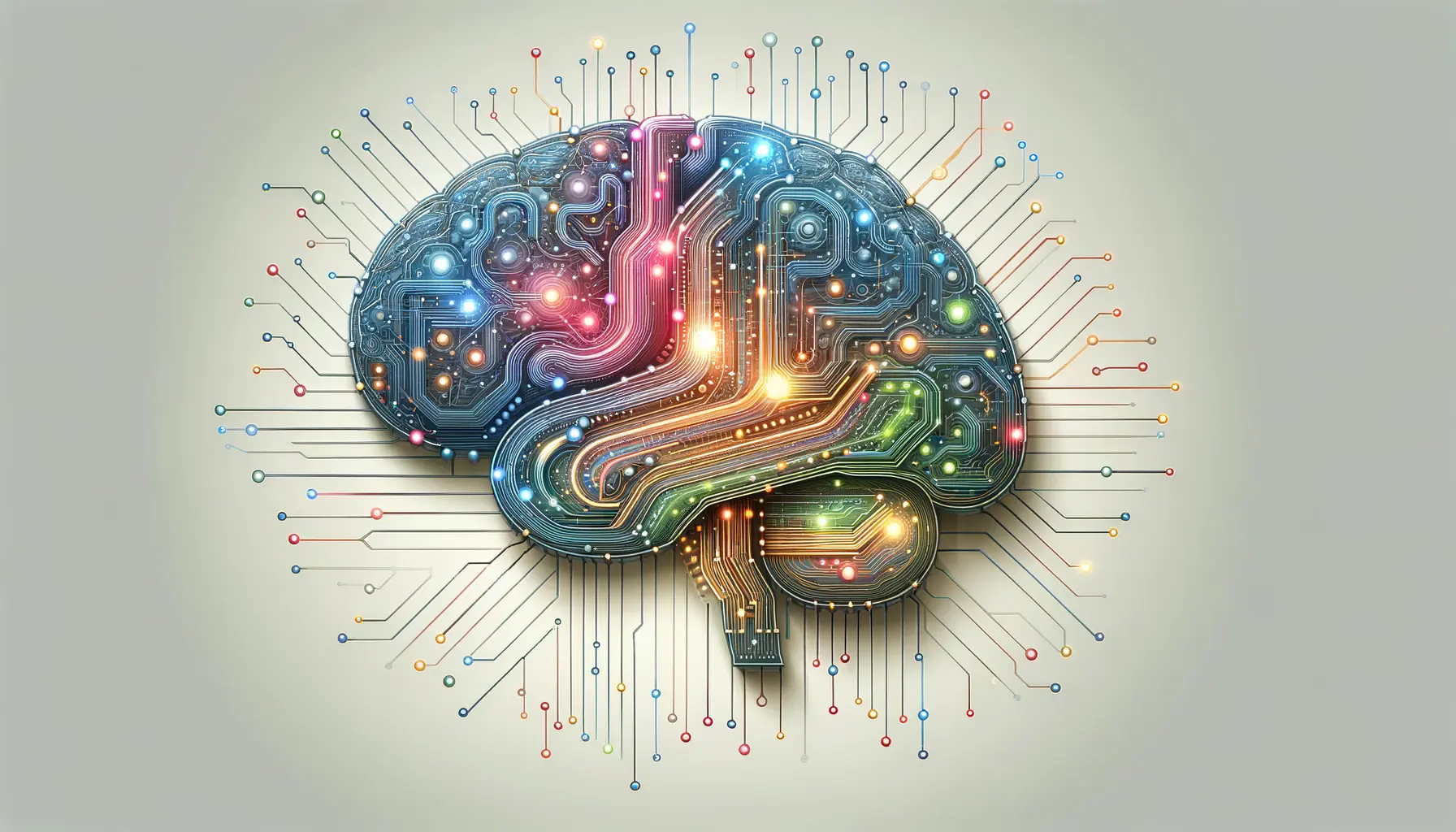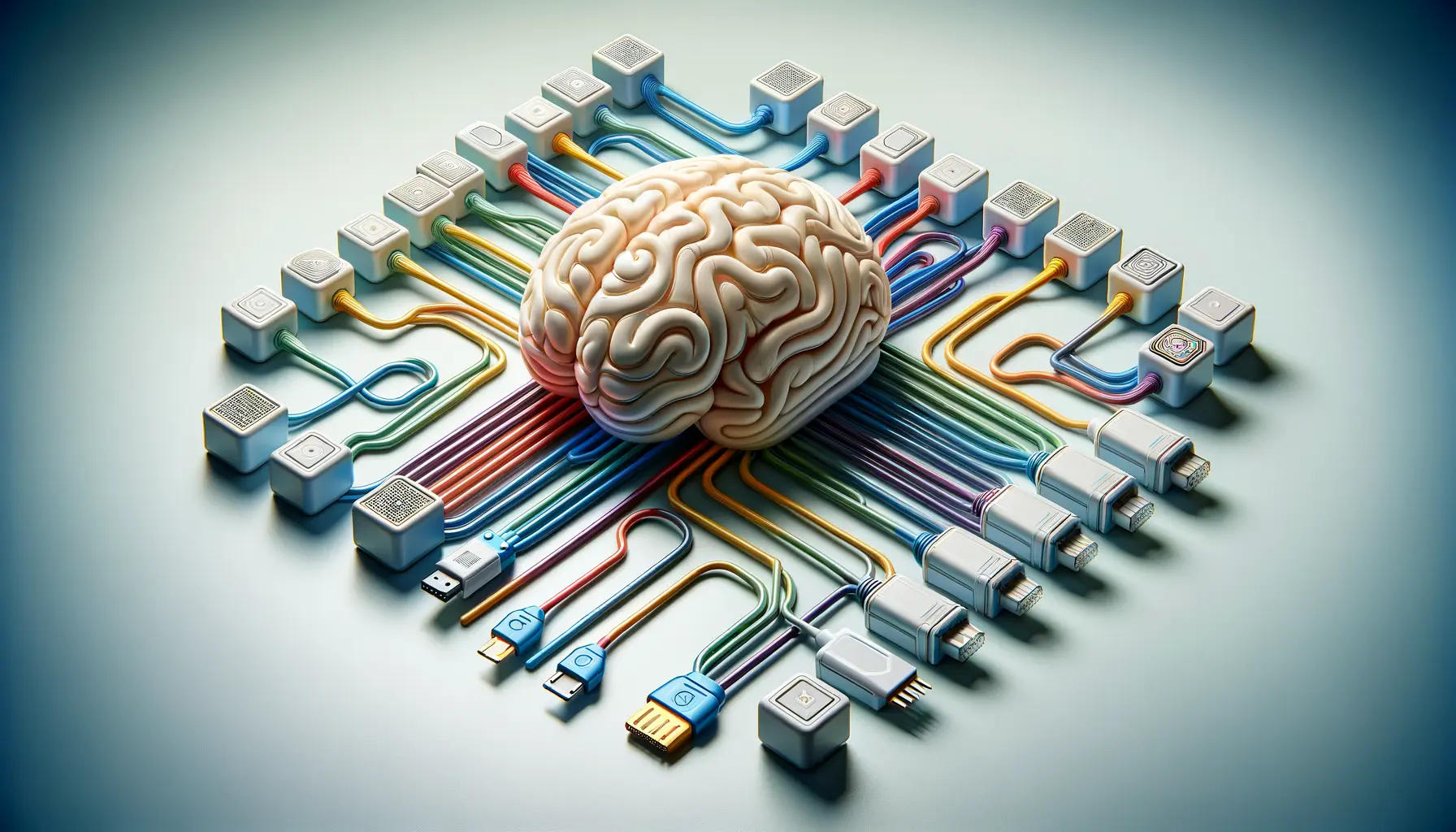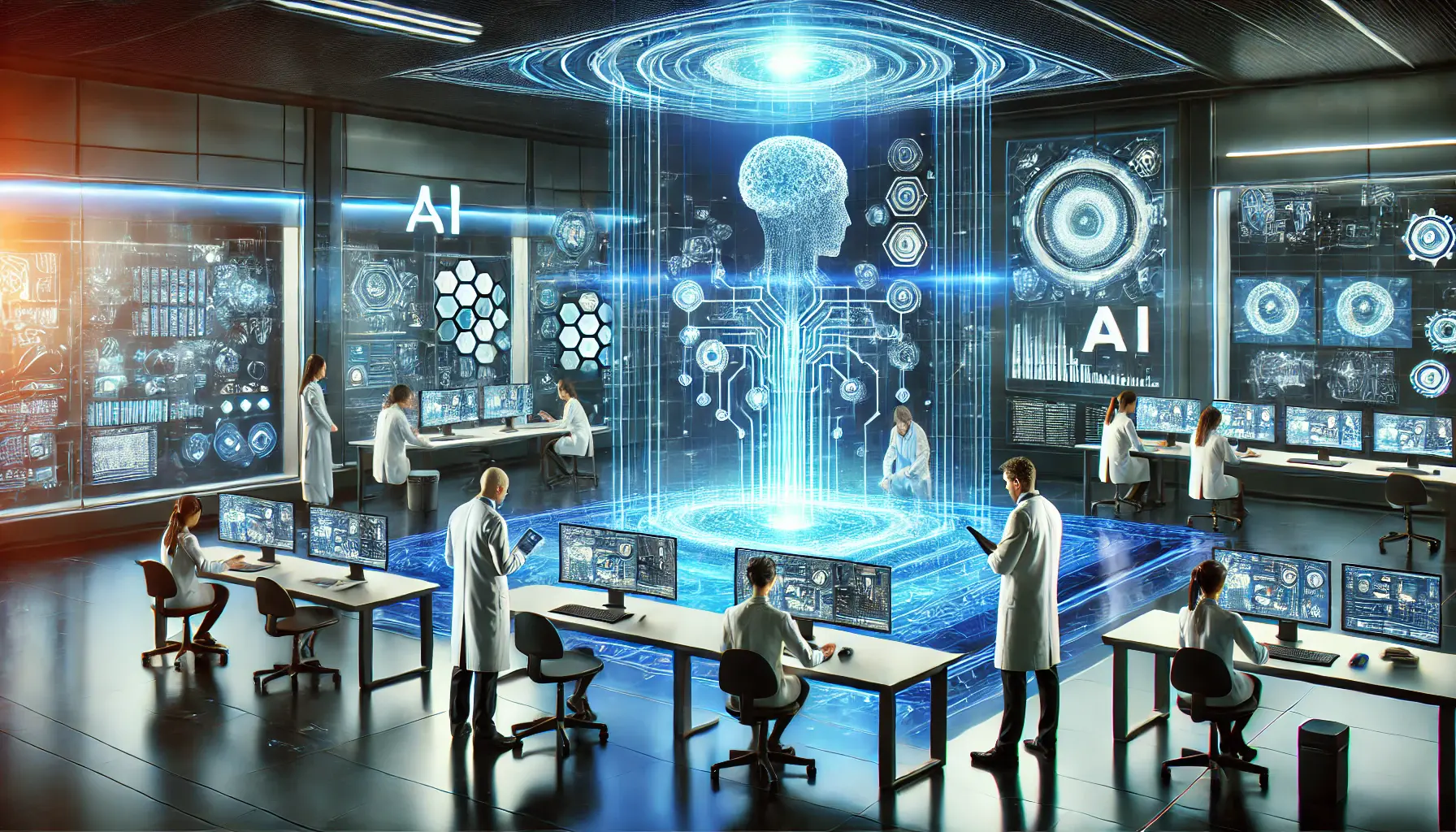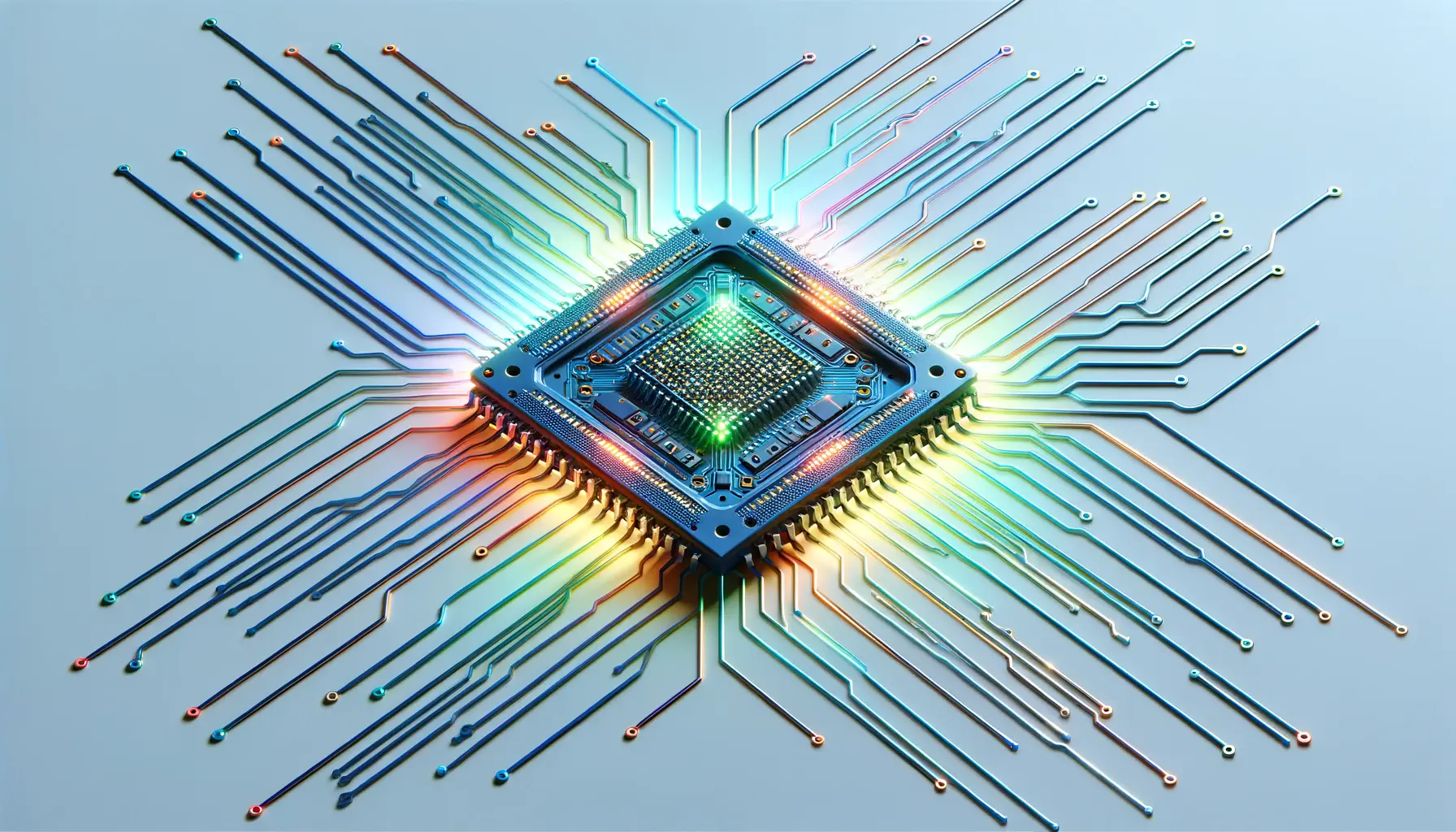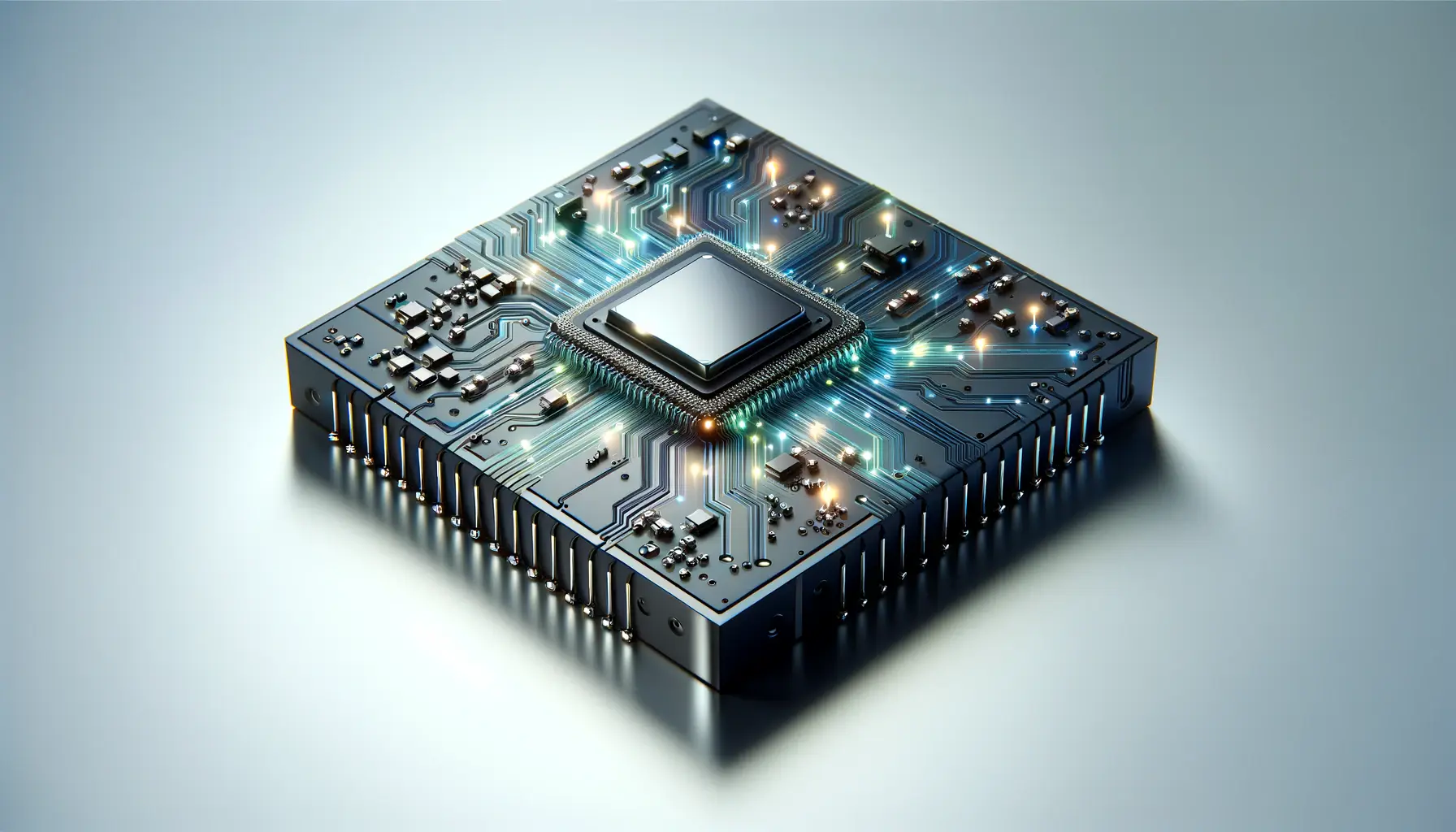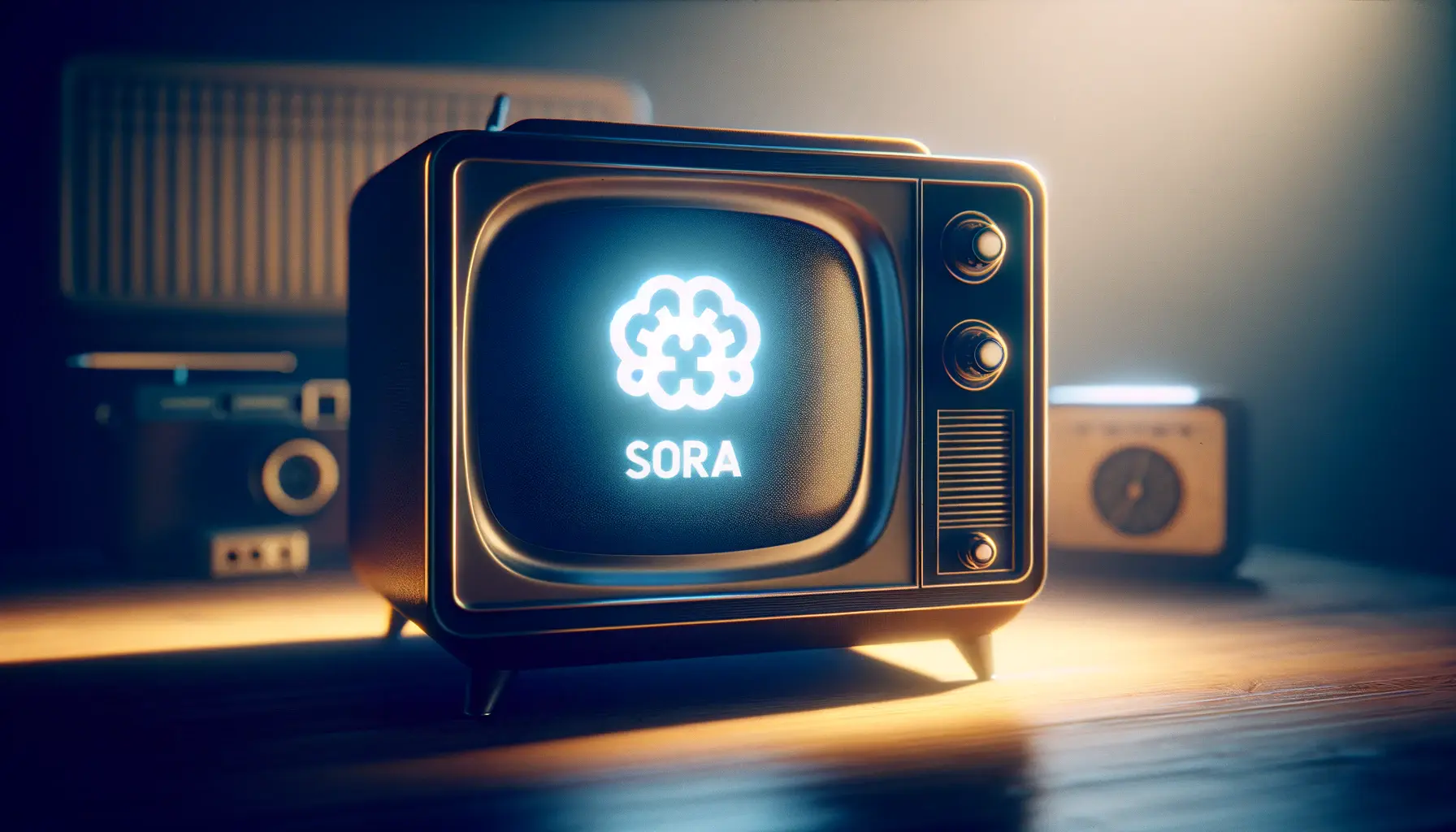The realm of artificial intelligence has witnessed a significant leap forward with the advent of DALL-E, a groundbreaking technology developed by OpenAI.
This innovative AI model has captivated the imagination of tech enthusiasts and creative professionals alike, by demonstrating an uncanny ability to generate detailed images from textual descriptions.
The essence of DALL-E’s genius lies not just in its output but in the sophisticated technology that powers it, blending the realms of natural language understanding and image generation in ways previously thought to be the domain of science fiction.
At its core, DALL-E leverages a complex interplay of algorithms and models that have evolved from years of research in machine learning and artificial intelligence.
This technology’s ability to understand and interpret human language, then translate those interpretations into visually compelling images, marks a significant milestone in AI development.
It’s a testament to the rapid advancements in AI capabilities, pushing the boundaries of creativity and machine intelligence.
As we delve deeper into the technology behind DALL-E, we uncover a fascinating blend of natural language processing (NLP), computer vision, and generative adversarial networks (GANs), each playing a pivotal role in this AI’s remarkable abilities.
- Understanding DALL-E’s Core Technology
- Exploring the Architecture Behind DALL-E
- The Training Process of DALL-E
- Applications and Implications of DALL-E
- Challenges and Ethical Considerations
- Future Directions and Potential Enhancements
- Integrating DALL-E with Other AI Technologies
- Envisioning the Future of Creativity and AI
- DALL-E Technology FAQs
Understanding DALL-E’s Core Technology
The Role of Natural Language Processing (NLP)
Natural Language Processing stands at the forefront of DALL-E’s technology, enabling the AI to comprehend and process human language.
This involves parsing the text of the input prompts, understanding their semantics, and translating these into a form that can guide the image generation process.
NLP in DALL-E is not just about recognizing words but grasping the nuances and contexts within which these words are used, a feat achieved through sophisticated models trained on vast datasets of text and images.
The integration of NLP with image generation technology is what sets DALL-E apart.
By effectively interpreting text prompts, DALL-E can create images that are not only relevant to the description but also exhibit creativity and a deep understanding of the subject matter.
This process involves complex algorithms that map textual descriptions to visual concepts, a challenge that has been meticulously addressed by OpenAI’s researchers.
Generative Adversarial Networks (GANs) and Their Impact
Generative Adversarial Networks (GANs) play a crucial role in the image generation capabilities of DALL-E.
GANs are a class of machine learning frameworks where two neural networks contest with each other in a game.
In the context of DALL-E, one network generates images based on the text inputs, while the other evaluates these images against a set of criteria to determine their authenticity and relevance to the input prompt.
This iterative process ensures that the generated images are not only high-quality but also closely align with the user’s request.
The use of GANs in DALL-E represents a significant advancement in AI’s ability to create complex, detailed, and varied images from textual descriptions.
It’s a testament to the power of adversarial training in refining AI outputs, making them more precise and aligned with human expectations.
The technology behind GANs in DALL-E has been fine-tuned to understand and replicate a wide range of artistic styles, subjects, and compositions, showcasing the model’s versatility and creative potential.
The intersection of NLP and GANs within DALL-E’s framework exemplifies the innovative approach to AI-driven creativity, setting new standards for what machines can achieve in the realm of art and design.
Exploring the Architecture Behind DALL-E
The architecture of DALL-E is a marvel of modern AI engineering, embodying the culmination of years of research and development in deep learning.
At its heart lies a sophisticated model that intricately blends various AI technologies to achieve its remarkable capabilities.
Understanding this architecture provides insight into how DALL-E translates textual descriptions into vivid, accurate images.
The foundation of DALL-E’s architecture is based on a variant of the Transformer model, originally designed for understanding and generating human language.
This model has been adapted to not only grasp the semantics of language but also to understand the complex relationship between textual descriptions and visual elements.
The Transformer model’s ability to handle sequential data makes it ideal for this task, allowing DALL-E to process the nuances of language and imagery in a cohesive manner.
Transformer Models and Image Synthesis
Transformer models are at the core of DALL-E’s ability to synthesize images from text.
These models excel in handling sequential data, making them adept at understanding the order and context of words in a prompt.
When applied to image generation, the Transformer model uses this capability to map textual descriptions to visual concepts, effectively bridging the gap between language and imagery.
- Attention Mechanisms: A key feature of Transformer models is their use of attention mechanisms, which allow the model to focus on relevant parts of the input data when making predictions. In the context of DALL-E, this means emphasizing certain words or phrases in a prompt that are crucial for generating an accurate image.
- Large-Scale Training Data: The effectiveness of Transformer models in DALL-E is also due to the extensive training on diverse datasets comprising millions of text-image pairs. This training enables the model to learn a wide range of visual styles and concepts, enhancing its ability to generate images that closely match the input descriptions.
Diffusion Models in Image Generation
Another pivotal technology in DALL-E’s architecture is the use of diffusion models.
These models work by gradually transforming a random noise pattern into a coherent image, guided by the textual description provided as input.
The process involves a series of steps where the model iteratively refines the image, making it more detailed and aligned with the text prompt at each step.
- Iterative Refinement: The diffusion process allows for the gradual improvement of the image, with each iteration bringing the generated picture closer to what is described in the text. This method ensures that the final image is a detailed and accurate representation of the input prompt.
- Control Over Image Characteristics: Diffusion models give DALL-E significant control over the characteristics of the generated images, such as style, composition, and color. This flexibility is crucial for creating images that not only match the description but also possess a high degree of artistic quality.
The integration of Transformer and diffusion models within DALL-E’s architecture is a testament to the innovative application of AI technologies in creative fields, offering a glimpse into the future of AI-driven art and design.
The Training Process of DALL-E
The training process of DALL-E is a critical component that underpins its ability to generate images from textual descriptions accurately.
This process involves feeding the model vast amounts of data, consisting of text-image pairs, to teach it the complex relationships between words and visual elements.
The sophistication of DALL-E’s training regimen is a testament to the advancements in machine learning techniques and the computational resources available to researchers today.
At the heart of DALL-E’s training lies the concept of unsupervised learning, where the model learns to identify patterns and relationships in the data without explicit instructions.
This approach is crucial for the model’s ability to generate a wide variety of images across different styles and subjects.
The training process is both extensive and intensive, requiring significant computational power and time to achieve the desired level of accuracy and creativity in image generation.
Stages of Training
The training of DALL-E can be broken down into several stages, each focusing on different aspects of the model’s capabilities:
- Pre-training: In this initial stage, DALL-E is exposed to a large dataset of text-image pairs. This exposure helps the model learn basic correlations between textual descriptions and visual content, setting the foundation for more complex image generation tasks.
- Fine-tuning: After pre-training, DALL-E undergoes a fine-tuning process where it is trained on a more specialized dataset. This stage aims to refine the model’s understanding of specific themes, styles, or subjects, enhancing its ability to generate images that closely match the input prompts.
- Adversarial Training: To further improve the quality and relevance of the generated images, DALL-E is subjected to adversarial training. This involves using a separate model to challenge the generated images, helping DALL-E learn to produce outputs that are increasingly realistic and aligned with the textual descriptions.
Challenges in Training
The training process of DALL-E is not without its challenges.
One of the primary hurdles is ensuring the model’s ability to understand and interpret the vast diversity of human language and translate it into accurate visual representations.
Additionally, the model must be trained to handle ambiguous or complex prompts without losing the essence of the requested image.
- Data Diversity: Ensuring the training dataset encompasses a wide range of text-image pairs is crucial for the model’s ability to generate diverse and accurate images. This diversity helps DALL-E understand the nuances of different cultures, languages, and artistic styles.
- Computational Resources: The extensive training required by DALL-E demands significant computational resources. The model’s complexity and the size of the datasets used mean that training can take weeks or even months, requiring powerful hardware and efficient algorithms.
The meticulous training process of DALL-E highlights the intricate balance between computational power, data diversity, and innovative machine learning techniques, culminating in a model capable of bridging the gap between textual prompts and visual creativity.
Applications and Implications of DALL-E
The advent of DALL-E has opened up a plethora of possibilities across various fields, demonstrating the vast potential of AI in enhancing creativity and productivity.
The applications of this technology extend far beyond mere novelty, offering practical solutions and innovative approaches in design, education, and even therapy.
As we explore the breadth of DALL-E’s applications, it becomes evident that this technology is not just a tool for creating art but a versatile asset that can contribute significantly to multiple domains.
However, with great power comes great responsibility.
The implications of DALL-E’s capabilities prompt a discussion on ethics, copyright, and the potential for misuse.
As we delve into the applications of DALL-E, it’s crucial to consider these aspects to ensure the technology is used in a manner that benefits society and fosters creativity without infringing on rights or ethical standards.
Creative Design and Art
One of the most immediate applications of DALL-E is in the realm of creative design and art.
Artists and designers can use DALL-E to generate unique visual concepts, illustrations, and artworks based on textual descriptions.
This capability not only accelerates the creative process but also allows for the exploration of ideas that might be difficult to articulate or visualize without the aid of AI.
DALL-E’s ability to interpret and render complex, abstract concepts into tangible images opens new avenues for creativity and artistic expression.
- Product Design: Designers can leverage DALL-E to visualize product concepts and iterations quickly, reducing the time and resources spent on prototyping and testing.
- Architectural Visualization: Architects and urban planners can use DALL-E to generate visualizations of buildings and spaces from descriptive texts, facilitating a more intuitive design process.
Educational Tools
DALL-E’s technology also finds significant application in education, where it can be used to create visual aids and learning materials tailored to specific topics or concepts.
By generating images from textual descriptions, educators can provide students with visual representations of historical events, scientific phenomena, or literary scenes, enhancing understanding and engagement.
This application of DALL-E not only makes learning more interactive but also supports diverse learning styles by incorporating visual elements into the educational content.
- Visualizing Historical Events: Teachers can use DALL-E to bring history to life, creating images that depict historical events, figures, and contexts, making them more relatable and understandable for students.
- Science Education: DALL-E can assist in visualizing complex scientific concepts, from molecular structures to astronomical phenomena, aiding in the comprehension and retention of information.
Therapeutic Applications
Interestingly, DALL-E’s capabilities extend into the realm of therapy, where it can be used as a tool for expression and communication.
For individuals who may find it challenging to articulate their thoughts and emotions verbally, DALL-E offers a medium to express themselves through visual imagery.
Therapists can use the technology to encourage clients to explore their feelings and experiences in a non-verbal, creative way, potentially opening new pathways for understanding and healing.
- Art Therapy: By creating images based on descriptive prompts, individuals can explore their emotions and experiences in a safe, therapeutic setting, facilitated by the AI’s ability to render complex emotional states into visual form.
- Communication Aid: For those with communication difficulties, DALL-E can serve as a bridge, allowing them to convey ideas and feelings through images, enhancing their ability to connect with others.
The diverse applications of DALL-E underscore its potential to revolutionize not only the creative industries but also education, therapy, and beyond, highlighting the transformative power of AI in various aspects of human life.
Challenges and Ethical Considerations
The innovation and capabilities of DALL-E, while impressive, also introduce a range of challenges and ethical considerations that must be addressed.
As with any powerful technology, the potential for misuse and the impact on society, copyright, and personal privacy are significant concerns.
These challenges necessitate a careful examination of how DALL-E is used and the safeguards that need to be implemented to ensure its responsible deployment.
Understanding these challenges is crucial for developers, users, and policymakers alike, as it helps in crafting guidelines and regulations that balance innovation with ethical considerations.
The goal is to harness the benefits of DALL-E while mitigating risks and ensuring that the technology contributes positively to society.
Data Bias and Fairness
One of the fundamental challenges associated with DALL-E and similar AI technologies is the issue of data bias.
Since these models learn from vast datasets of images and text, there’s a risk that they might perpetuate or even amplify biases present in the training data.
This can lead to the generation of images that are biased, stereotypical, or offensive, raising concerns about fairness and representation.
- Addressing Bias: Efforts must be made to ensure that the datasets used for training DALL-E are diverse and representative of different cultures, identities, and perspectives. This requires a conscious effort to identify and mitigate biases during the dataset curation process.
- Transparency and Accountability: Developers and researchers should be transparent about the limitations of DALL-E and the measures taken to address bias and fairness. This includes disclosing the sources of training data and the steps taken to evaluate and mitigate potential biases.
Copyright and Intellectual Property
The ability of DALL-E to generate images based on textual descriptions also raises questions about copyright and intellectual property rights.
When DALL-E creates images that are similar to existing artworks or photographs, it can lead to disputes over copyright ownership and the originality of AI-generated content.
- Navigating Copyright Laws: There is a need for clear guidelines and legal frameworks that address the copyright status of AI-generated images. This includes determining the rights of the creators who use DALL-E to generate artwork and the extent to which AI-generated content is protected under copyright laws.
- Creative Commons and Licensing: Implementing licensing models that accommodate the unique nature of AI-generated content, such as Creative Commons licenses, could provide a way to share and use AI-generated images ethically and legally.
Privacy Concerns
Privacy is another critical consideration, especially when DALL-E is used to generate images that include people’s likenesses or personal data.
There’s a risk that the technology could be used to create compromising or harmful content without individuals’ consent, violating their privacy and dignity.
- Consent and Control: Mechanisms should be in place to ensure that images of individuals are generated only with their consent and that there are controls to prevent the misuse of personal data.
- Regulatory Compliance: Developers and users of DALL-E must adhere to privacy laws and regulations, such as the General Data Protection Regulation (GDPR) in the European Union, which sets strict guidelines for the processing of personal data.
While DALL-E represents a significant advancement in AI, navigating the ethical landscape requires careful consideration of the challenges and the implementation of robust ethical guidelines and legal frameworks.
Future Directions and Potential Enhancements
The journey of DALL-E from its inception to its current state has been marked by rapid advancements and significant achievements.
However, the path forward promises even more exciting developments as researchers and developers continue to explore new ways to enhance its capabilities and address existing limitations.
The future of DALL-E and similar AI technologies is poised to further transform creative industries, improve accessibility, and even tackle complex societal challenges.
As we look ahead, several key areas of focus emerge, each offering the potential for significant enhancements to DALL-E’s technology.
These advancements are not just about refining the model’s ability to generate images but also about making the technology more accessible, ethical, and impactful across various sectors.
Improving Model Accessibility
One of the primary goals for the future development of DALL-E is to improve its accessibility.
This means making the technology more user-friendly and available to a wider audience, including artists, designers, educators, and even individuals with no technical background.
Simplifying the interface and reducing the computational resources required to run DALL-E can democratize access to AI-driven creativity, enabling more people to harness its potential.
- User-Friendly Interfaces: Developing intuitive, easy-to-use platforms that allow users to interact with DALL-E without needing in-depth knowledge of AI or machine learning.
- Cloud-Based Services: Offering DALL-E as a cloud-based service can reduce the need for powerful hardware, making the technology accessible to individuals and organizations with limited resources.
Enhancing Ethical Frameworks
As DALL-E continues to evolve, so too must the ethical frameworks that govern its use.
This involves ongoing efforts to address issues of bias, copyright, and privacy, ensuring that DALL-E’s development and application are aligned with societal values and norms.
Establishing clear guidelines and best practices for the ethical use of DALL-E can help mitigate risks and foster trust among users and the broader public.
- Regular Audits for Bias: Implementing regular audits of DALL-E’s training data and outputs to identify and mitigate biases, ensuring fair and equitable representations in generated images.
- Collaboration with Legal Experts: Working closely with legal experts to navigate copyright and privacy challenges, developing solutions that respect intellectual property rights and protect individuals’ privacy.
Expanding the Range of Applications
The potential applications of DALL-E are vast and varied, extending beyond the realms of art and design into fields such as education, healthcare, and environmental science.
Future enhancements could focus on tailoring DALL-E’s capabilities to specific applications, such as generating educational content, visualizing scientific data, or creating simulations for environmental modeling.
By expanding the range of applications, DALL-E can have a broader impact, addressing real-world challenges and contributing to positive societal outcomes.
- Custom Models for Specific Industries: Developing versions of DALL-E that are optimized for specific industries or applications, enhancing its utility and effectiveness in diverse contexts.
- Integration with Other Technologies: Combining DALL-E with other AI technologies, such as natural language processing and virtual reality, to create immersive, interactive experiences.
The future of DALL-E holds exciting possibilities, with potential enhancements aimed at making the technology more accessible, ethical, and impactful. As we continue to explore these advancements, DALL-E stands as a beacon of the transformative power of AI, promising to unlock new creative potentials and drive innovation across various sectors.
Integrating DALL-E with Other AI Technologies
The integration of DALL-E with other artificial intelligence technologies represents a frontier with immense potential to amplify its capabilities and applications.
By combining DALL-E’s image generation prowess with advancements in areas such as natural language processing (NLP), robotics, and augmented reality (AR), we can unlock new dimensions of interaction, creativity, and efficiency.
This synergy not only enhances DALL-E’s functionality but also opens up innovative pathways for solving complex problems and creating immersive experiences.
As we explore the possibilities of integrating DALL-E with other AI technologies, it becomes clear that the potential applications are as diverse as they are impactful.
From enhancing human-AI collaboration to creating more dynamic and responsive educational tools, the convergence of these technologies can transform various aspects of our lives and work.
Enhancing Creative Collaboration
Integrating DALL-E with NLP and machine learning models can revolutionize creative collaboration, offering tools that understand and respond to natural language inputs with visual outputs.
This integration can facilitate a more intuitive interaction between creators and AI, where ideas can be visually explored and iterated upon in real-time, significantly accelerating the creative process.
- Interactive Design Tools: By combining DALL-E with NLP, designers and artists can use conversational interfaces to generate and refine visual concepts, making the design process more fluid and collaborative.
- Content Creation: Integrating DALL-E with content management systems and creative software can streamline the creation of visual content, from marketing materials to interactive web designs, tailored to specific narratives or themes.
Augmenting Education and Training
The integration of DALL-E with AR and virtual reality (VR) technologies can create immersive educational and training environments.
By generating visual content in response to textual descriptions, DALL-E can provide real-time visual aids and simulations that enhance learning and skill acquisition in fields ranging from medicine to engineering.
- Medical Training: Combining DALL-E with VR can simulate medical procedures and anatomical models, offering students a visually rich and interactive learning experience.
- Technical Skill Development: In engineering and design education, integrating DALL-E with AR tools can overlay visual instructions or simulations onto physical objects, providing a hands-on learning experience.
Improving Human-AI Interaction
The fusion of DALL-E with robotics and conversational AI can lead to the development of more intuitive and interactive robots and virtual assistants.
These AI agents could use visual content generated by DALL-E to communicate ideas, instructions, or responses to users, making interactions more engaging and understandable.
- Personal Assistants: Virtual assistants integrated with DALL-E could provide visual responses to queries, enhancing user experience and making information retrieval more interactive.
- Educational Robots: Robots equipped with DALL-E’s capabilities could teach or assist with tasks by generating visual explanations or demonstrations, making learning more interactive and fun.
The integration of DALL-E with other AI technologies holds the key to unlocking innovative applications that blend the visual with the interactive, heralding a new era of AI-enhanced creativity, learning, and human-AI collaboration.
Envisioning the Future of Creativity and AI
The exploration of DALL-E’s technology reveals not just the intricacies of its design and function but also the broader implications and possibilities it heralds for the future of creativity and artificial intelligence.
As we stand on the brink of what could be a new era in digital art, design, and beyond, the technology behind DALL-E offers a glimpse into a future where AI’s role is not just supportive but foundational to creative processes.
The Harmonious Blend of Art and Science
The genius of DALL-E lies in its ability to seamlessly blend the realms of art and science, a feat that underscores the potential of technology to enhance human creativity.
This harmonious blend opens up new avenues for artists, designers, and creators of all kinds, offering tools that extend the reach of their imagination and enable the realization of ideas that were once confined to the realm of the abstract.
The technology behind DALL-E, with its intricate use of NLP, GANs, and Transformer models, is a testament to the incredible strides made in AI, pushing the boundaries of what machines can achieve in partnership with human creativity.
Addressing Ethical Considerations
As we embrace the capabilities of DALL-E, it is imperative to navigate the ethical landscape that accompanies such powerful technology.
The challenges of data bias, copyright, and privacy are not insurmountable but require diligent attention and a commitment to developing AI in a manner that is responsible, equitable, and respectful of human rights.
The ongoing efforts to refine ethical frameworks and implement safeguards are crucial in ensuring that the technology behind DALL-E contributes positively to society and fosters an environment where creativity is nurtured without compromising ethical standards.
Looking Ahead: The Uncharted Territories of AI Creativity
The journey of DALL-E from a fascinating experiment to a transformative tool in creative industries is just the beginning.
As we look to the future, the potential for integrating DALL-E with other AI technologies suggests a landscape ripe with possibilities.
From enhancing human-AI collaboration to revolutionizing education and beyond, the technology behind DALL-E is set to redefine our understanding of creativity, making it more inclusive, accessible, and diverse.
The exploration of these uncharted territories will undoubtedly bring challenges, but with careful stewardship, the fusion of AI and creativity can lead to a future where technology amplifies the best of human imagination.
- The potential for DALL-E to democratize creativity, making powerful tools accessible to a wider audience.
- The importance of ethical considerations and the ongoing efforts to address them.
- The exciting possibilities that lie in integrating DALL-E with other AI technologies to explore new applications and enhance human-AI interaction.
In conclusion, the technology behind DALL-E represents a significant milestone in the journey of artificial intelligence, offering a window into a future where the lines between human and machine creativity become increasingly blurred.
As we continue to explore this frontier, the promise of AI to augment, enhance, and expand the horizons of human creativity remains one of the most exciting prospects of our time.
The genius of DALL-E, therefore, is not just in the images it creates but in the conversations it sparks about the future of creativity, ethics, and the role of technology in our lives.
DALL-E Technology FAQs
Explore commonly asked questions about the revolutionary DALL-E technology and its capabilities.
DALL-E is an AI by OpenAI that generates images from textual descriptions, blending creativity with technology.
It uses advanced AI algorithms to interpret text prompts and create corresponding images, leveraging NLP and GANs.
Yes, but it’s important to adhere to OpenAI’s content policy and copyright laws when using DALL-E generated images.
Yes, DALL-E is designed to be user-friendly, catering to both tech-savvy individuals and creative professionals.
While powerful, DALL-E may sometimes produce unexpected results and is subject to OpenAI’s ethical guidelines.
Refining your text prompts and using specific, descriptive language can significantly enhance the output quality.
Yes, DALL-E offers features like inpainting and outpainting, allowing users to edit and refine generated images.
Concerns include data bias, copyright infringement, and privacy, with ongoing efforts to address these issues.
